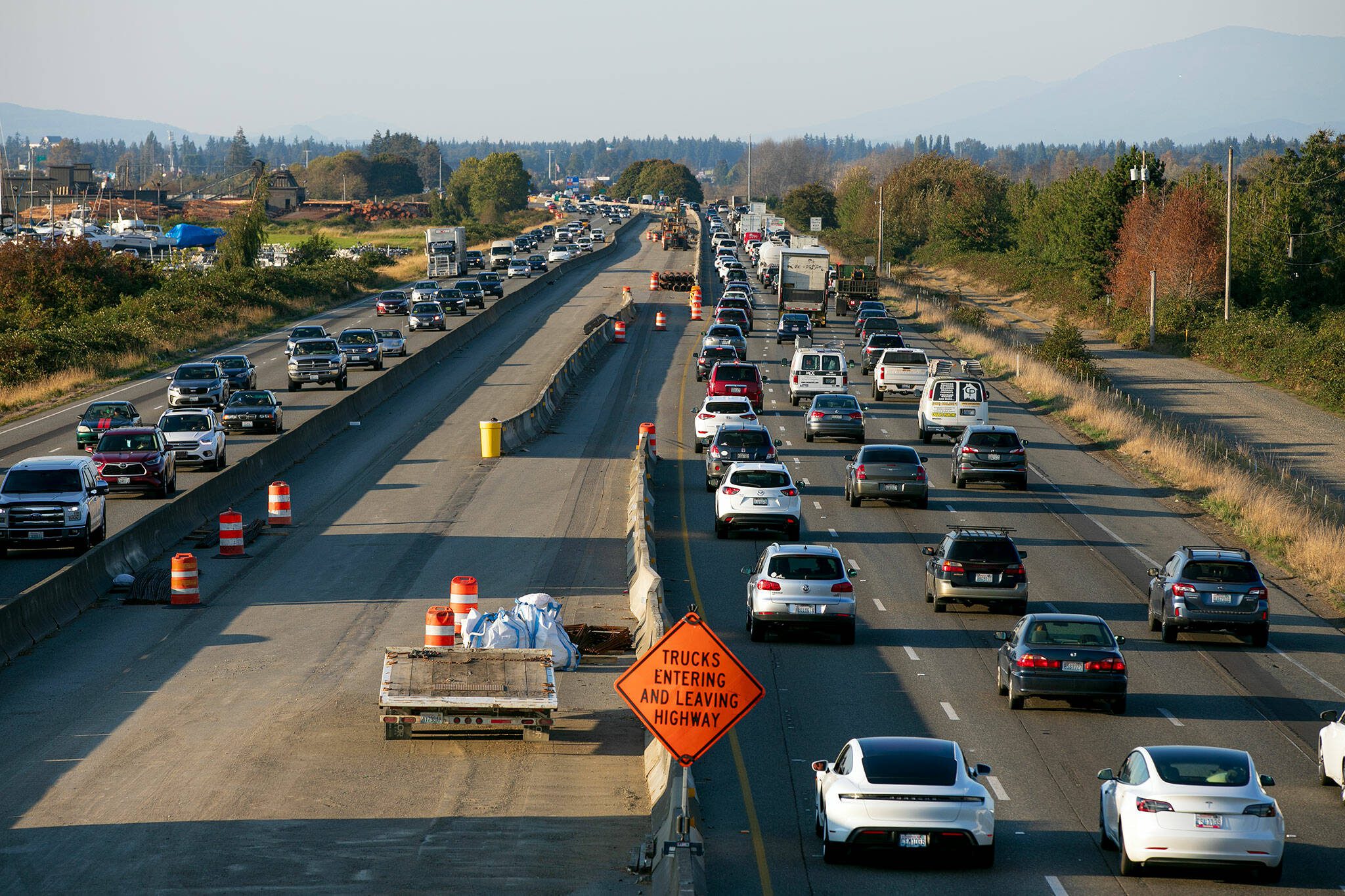EVERETT — More cars on Washington’s highways have local lawmakers looking for ways to encourage other modes of transportation.
Washington drivers logged 34.2 billion miles on state highways last year, according to state data released this month. While that is only a 1.2% increase from 2021, all of that wear and tear is affecting the economy and traffic.
On state highways in the central Puget Sound region, delays were up 35% from the previous year.
Heavy travel on the roads is a sign of an economy bouncing back from the pandemic, said Sreenath Gangula, a transportation safety and systems analyst at the state Department of Transportation.
“However, more miles traveled can mean increased congestion, travel delays and greenhouse gas emissions,” he wrote in an email.
The department recently released the new travel statistics for 2022 in an online dashboard.
Heavy ridership on state highways and city roads can also cause an increase in maintenance needs.
State Sen. Marko Liias, D-Edmonds, said an uptick in high-priority road maintenance has left other needs neglected.
“Driving around Snohomish County, I see more trash on the side of the road, the graffiti takes longer to get removed,” he said. “And I think that is really where you see the impact because the same crews that do that are fixing potholes and cracks in the roads.”
The Move Ahead Washington transportation package lawmakers passed last year included $3 billion to preserve existing infrastructure. It also included $3 billion toward increasing reliable transit systems.
But Liias said a lack of funding for road maintenance has come from a decline in revenue from Washington’s gas tax. Since 2016, the state’s gas tax rate has been 49.4 cents per gallon.
More people are driving all-electric cars, and those with newer gas-powered cars are getting better mileage, meaning less tax revenue.
“Our gas tax revenue, the primary way we pay for road maintenance, is not at the same pace as the cost of caring for our roads,” Liias said.
He said the Legislature needs to find ways to adapt to that loss.
“Our crews have to manage these assets to the best of their abilities based on available funding in addition to new facilities or improvements coming online every year,” Gangula wrote.
Liias and state Sen. John Lovick, D-Mill Creek, both agree more drivers need to transition to public transportation to avoid heavy traffic and further maintenance issues.
“We need to do everything we can to get people out of their cars, because this area is growing very, very fast, and get people using our mass transit,” Lovick said.
Numbers from the new dashboard show a spike in use of passenger rail and public transportation.
From the previous year, public transportation use was up 35%. The use of Amtrak Cascades’ Washington segment was up 71%.
These increases can largely be attributed to easing pandemic restrictions on public transit. In March 2020, Amtrak halted its route north of Seattle. Service resumed in September 2022.
With more than 380,000 riders in 2022, the numbers still haven’t quite reached those of before the pandemic. In 2019, the Amtrak Cascades saw 753,000 passengers.
“Its not an accident that we added more (Amtrak Cascades) trains,” Liias said. “So when there’s more trains, there’s more people to ride them.”
As for buses, he said, the hours of service haven’t increased dramatically, but more people are beginning to ride buses again.
Since September 2022, youth 18 and under have been able to ride public transportation for free, thanks to the Move Ahead Washington package.
Lovick and Liias both said the youth ride free program is a powerful way to encourage more people to get out of their cars.
“We’re not asking people to switch 100% of the time,” Liias said. “We just want people to consider other options.”
Jenelle Baumbach: 360-352-8623; jenelle.baumbach@heraldnet.com; Twitter: @jenelleclar.
Talk to us
> Give us your news tips.
> Send us a letter to the editor.
> More Herald contact information.

























